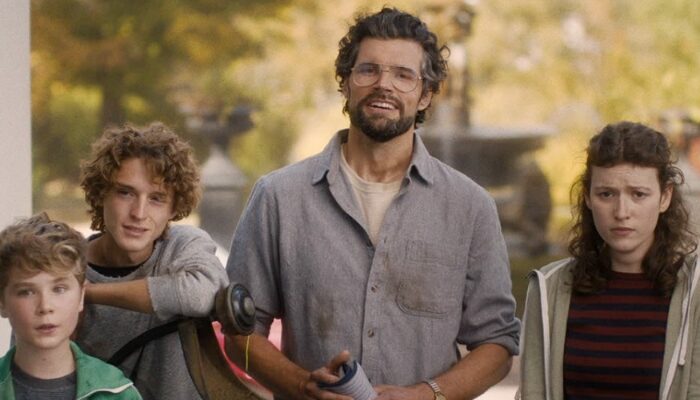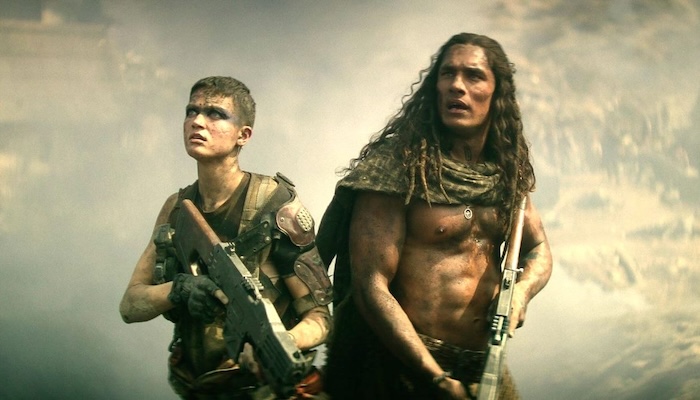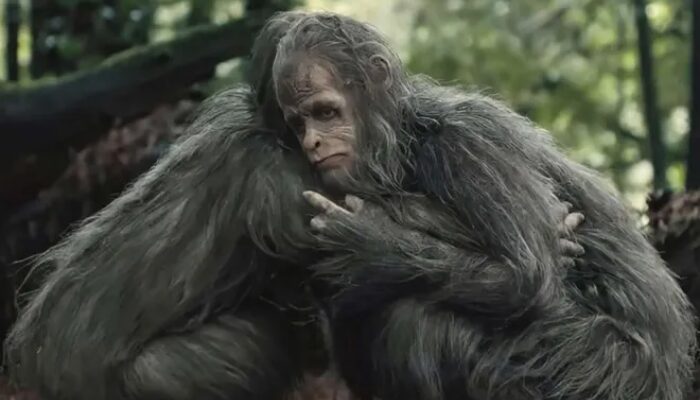Film Review – COLD MEAT (2024): Clever Plot Twists Amid Friction-Filled Performances Do Not Do Justice to the Premise
Cold Meat Film Review
Cold Meat (2024) Film Review, directed by Sébastien Drouin, written by Sébastien Drouin, James Kermack and Andrew Desmond and starring Allen Leech, Nina Bergman, and , Erik Thomson, Terence Crawford, Matt Crook, and Yan Tual.
Directed by Sébastien Drouin and written by the director, James Kermack, and Andrew Desmond, Cold Meat (2024) is a thriller film with survivalist and mildly philosophical themes. The sequestered setting gives the audience a forced sense of proximity with the escalating tension and helplessness of the two main characters, David (Allen Leech) and Ana (Nina Bergman). The anti-chemistry, if you will, among them works well within the enclosed scenes and the unexpected turns. Despite their skilled acting and a creative premise, the film does not develop its surrealism enough nor does it support its arguments about human behavior under duress.
Where much screen time was devoted to the protagonists’ attempts at breaking each other down, their protracted conversations become absurd—not philosophically profound. The writers invented a scenario where, “By God, just shut him up and shoot him already” is running through the audience’s mind, not the painstaking self-reflection intended by the film. This side effect, paired with Ana’s too-delayed taping of David’s mouth, creates a sense of dark humor, like radiation after an explosion. Unfortunately, the half-life of this absurdity survives throughout most of the film, save for when they have their brief heart-to-heart (however insincere it was). The questioning of Ana’s motives and actions is supposed to occur alongside the humanization of David, but the blunt continuation of his evil ways makes her mercy run counter to self-preservation in a film where survival is the point. More compelling reasons to spare David’s life, with juicy inner conflicts, would have helped create a psychologically robust Ana.
It was evident that in having the victim sustain dialogue with her assailant, the viewer was supposed to question the inherent differences between them. However, it was apparent that being stuck inside a car with someone is not sufficient to make some sort of fundamental similarity between them spontaneously materialize. Especially with the psychopath remaining unidimensional, any empathy we’re supposed to feel for him evaporates along with his body’s remains. By extension, Ana does not embody the moral ambiguity or decline of her values to which the story is aimed. Anyone would hold their attempted murderer hostage if the other option were to be murdered. There isn’t enough challenging Ana’s decisions to fully create a compelling thought experiment.
Without much going on in terms of cinematography or action, character development and exploration of surrealism need to be front-and-center in a film where a myth is so tied to personal fate. However, the beast makes the most minimal of appearances, as if it could barely be bothered to carry out its duties. While Ana and David undergo slight development during their brief moment of physical closeness, they mostly lack complexity. Moreover, the dream sequence is vague and unmoving, which results in a missed opportunity to delve into the mind of a serial killer, as Ana tried to do. Taken together, these elements point to unexplored territory which would have made the film more gruesome, panic-inducing, and philosophically moving.
Subjecting David to the native people’s snow blizzard myth creates an overly prescribed atmosphere in the film. As a result, the audience is primed to expect an evil-will-be-punished ending from the get-go. While the initial scenes cleverly thwart the audience’s assumptions of who is evil and who is not, the delivery of justice is not very moving when it arrives with too much announcement. Ultimately, the beast’s contribution is to be a deux ex machina for Ana. Without any scenes to corroborate Ana’s recounting of the myth, the film does not prove that David is condemned to roam snow blizzards. Therefore, the narrative fails to pack a punch at the climax, and possibly backfires: It could be interpreted that the beast saved David from dying slowly in the storm or of dying slowly in prison. Again, without further elaboration on David’s nightmares or his punishment, the mythology comes across as vegan and withholding, instead of meaty and bloody.
Rating: 6/10
Leave your thoughts on this Cold Meat review and the film below in the comments section. Readers seeking to support this type of content can visit our Patreon Page and become one of FilmBook’s patrons.
Readers seeking more film reviews can visit our Movie Review Page, our Movie Review Twitter Page, and our Movie Review Facebook Page.
Want up-to-the-minute notifications? FilmBook staff members publish articles by Email, Google News, Feedly, Twitter, Facebook, Instagram, Tumblr, Pinterest, Reddit, Telegram, Mastodon, Flipboard, and Threads.
Related Articles
FilmBook's Newsletter
Subscribe to FilmBook’s Daily Newsletter for the latest news!









